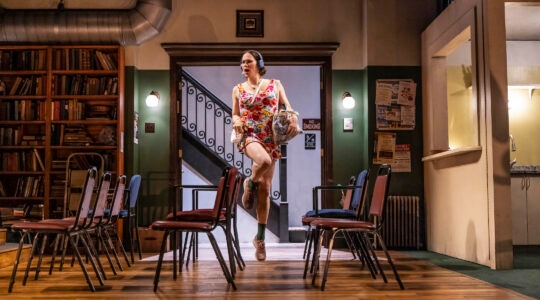‘Running of the Balls.” I squinted — did I read that right? Of course, Port Townsend, Wash., is hardly Pamplona; it’s a Victorian-era resort town full of affluent retirees on the Pacific coast.
So it makes sense that what’s being run down the street are huge balloon-like “golf balls,” not snorting bulls. The annual race takes place each May as part of the town’s Rhododendron Festival, a weeklong celebration of the state’s magenta-hued flower, kicked off by a quartet of smiling “Rhody Royalty” ladies.
Shadowed by the snowy peaks of the Olympic Mountains — a breathtaking view, once the fog lifts — Port Townsend is where they would have set “Gilmore Girls” if the Gilmores had been Left Coasters. It’s a quirky, artsy village full of brightly colored Victorians, where the Patagonia crowd brings a chipper energy to a red-brick downtown, and ships come and go at the busy waterfront.
To get here, you have two equally appealing options: a ferry across the Puget Sound from Seattle, about two hours to the south, or a scenic drive through thick, dark-green forest along the Olympic peninsula. Port Townsend lies on the tip of the Peninsula, directly across the San Juan de Fuca Strait from Vancouver Island, British Columbia; just to the south lie the coniferous rain forest and rugged peaks of Olympic National Park.
For the visitor, Port Townsend is also the most substantial of the tiny towns that dot the isles and inlets around Puget Sound. A vibrant cultural scene belies the seaport’s diminutive size (under 10,000 at last count, with a growing population of youthful retirees and empty-nesters).
And the Rhody Festival is the least of it: From a chamber music series to a writer’s conference and an international film festival, Port Townsend bustles with activities to complement its Great Outdoors.
Jewish arrivals have been part of the renaissance in a town once bypassed by the modern era. When the shipping industry brought entrepreneurs, including Jewish merchants, to Port Townsend around the turn of the last century, many expected the town to become the waterfront hub of the Pacific Northwest. Instead, the railroads bypassed the Peninsula, and the town went into a long decline.
A new generation discovered Port Townsend in the 1960s and ’70s, fixing up its Victorian landmarks — now part of a national historic district — and reviving its sleepy neighborhoods. Many of the newcomers were Jewish hippies of one stripe or another, and the congregation that coalesced in the ’80s and ’90s, Bet Shira (“House of Song”), remains communal and focused on social justice.
There’s no rabbi, and everything is done by members, from the twice-monthly Shabbat services to a weekly religious school. In short, it’s the kind of spiritual, left-of-center Jewish community you find, with many variations, along the West Coast.
Jewish names regularly dot the starry lineup at the Port Townsend Writer’s Conference, which started in the 1970s and has become one of the premier West Coast literary events. Held each July, it has featured the likes of Margaret Atwood, Ken Kesey, Raymond Carver and Ann Hood.
In July and August, top classical artists perform at the Olympia Music Festival, where concerts are enhanced by a unique setting — the lovely Art Deco-era Wheeler Theater, tucked amid the fireflies of Fort Worden State Park.
It’s one of several vintage theaters still in operation around Port Townsend. They include the Gold Rush-era Rose Theater, an art-house favorite and one of more than a half-dozen sites where the Port Townsend Film Festival screens films in September.
Water Street, a lively thoroughfare near the harbor, is dotted with restaurants, boutiques and galleries; many feature handmade candles, soap, pottery or scarves by Pacific Northwest artisans.
Across from the Rose Theater, the Victorian streetscape breaks for a half-block, giving way to a staircase that winds up through a profusion of greenery. At the top — along with harbor views — is the 1890 Fire Bell Tower, a retired landmark that, in its day, provided a unique method of summoning firefighters.
Past a lighthouse, around a point, is a favorite oasis of Port Townsendians: Chetzemoka Park. There are preserves and forests all over the region, of course, but Chetzemoka is beloved for its rustic prettiness.
People come for its arbor-shaded paths, wending past playgrounds and footbridges out of a novel; Scandinavian-style cottages that pepper a mossy field; and especially the pebbly beach, where a moody gray sky looks out toward Canada.
In springtime, riotous flowers are everywhere, from pink-blossom trees to groves of purple and yellow blooms. Did I mention that Port Townsend receives less than half the rainfall of Seattle? No wonder the secret is getting out.
The New York Jewish Week brings you the stories behind the headlines, keeping you connected to Jewish life in New York. Help sustain the reporting you trust by donating today.




